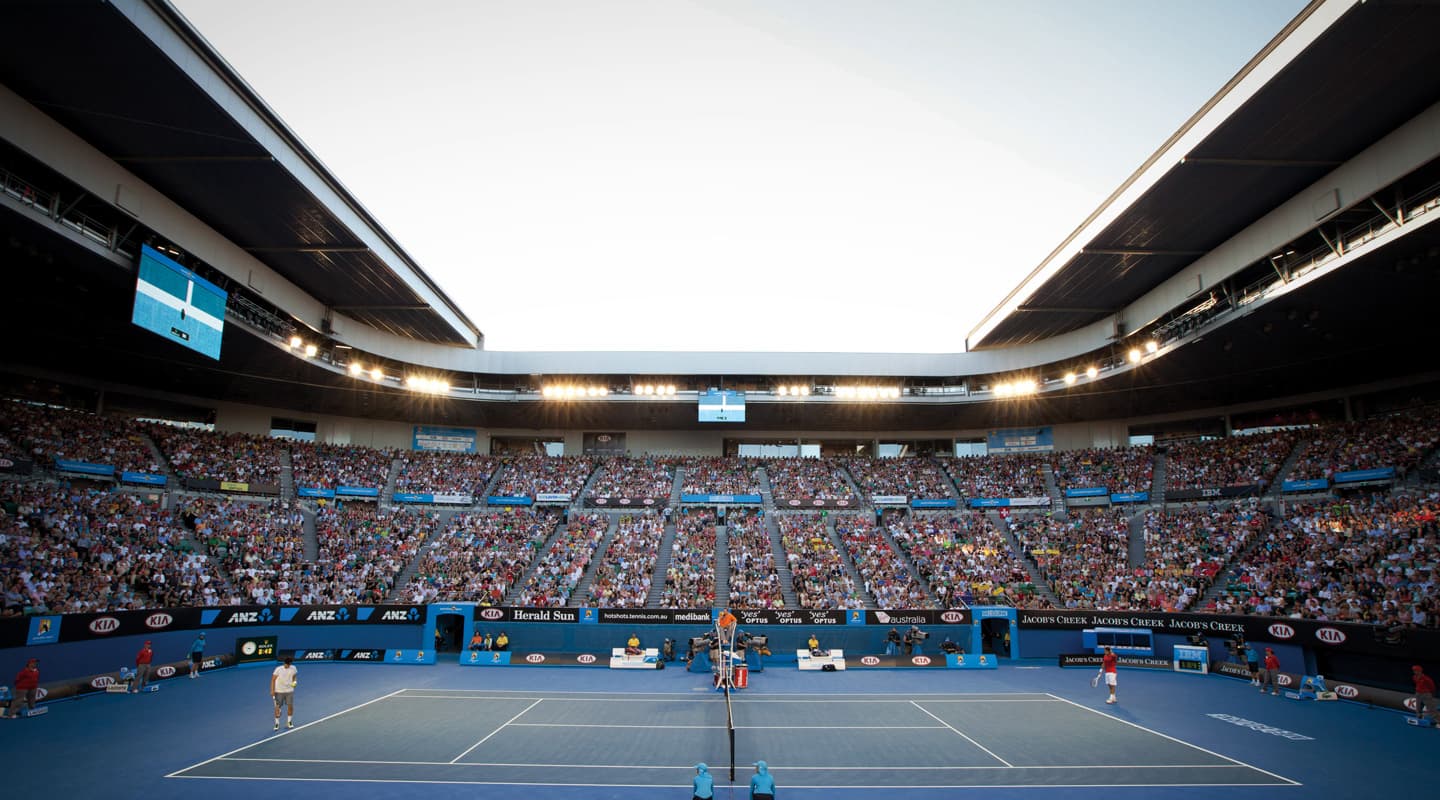
Grand Slam AV
Audiovisual technology at the Australian Open tennis championship.
Text:/ Paul Newton
Image (above):/ Eric Ronald Photography
The Australian Open is arguably the single largest and longest running event on the nation’s sporting calendar. The competition is held over three weeks within the Melbourne Park sporting precinct comprising, Rod Laver Arena, Hisense Arena and Margaret Court Arena (and a host of smaller courts surrounding these three). The combined seating capacity of these arenas is in excess of 30,000 – Rod Laver Arena (14,820), Hisense Arena (10,500) and Margaret Court (6000). The Australian television audience across the three weeks of competition averaged 1.86 million viewers, peaking at almost 4 million for the finals. Averaging 80,649 per day, about 686,000 fans attended the venues to watch a total of 697 players compete. Reporting on the action were some 700 journalists, photographers and videographers. This included 295 international media from 41 countries. On top of this, more than 1000 broadcast media representatives from 36 networks were accredited, broadcasting to over 100 countries.
Fans also kept up with the tournament through the official website, www.australianopen.com. Immediately prior to the men’s final, 13 million unique visitors (an increase of 39 per cent on 2011) had racked up more than 44 million visits to the website (an increase of 33 per cent). Once there, they made over 287,000,000 page views.
Social media also has a very strong uptake with this audience. The Australian Open Facebook page has been ‘liked’ more than 613,000 times, while the Australian Open Twitter account has doubled in size since 2011, now boasting over 82,000 followers. On mobile devices, the iPhone app has been downloaded over 660,000 times and the Android app more than 100,000 times.
If they weren’t lucky enough to gain access to any of the main arenas, more affordable general admission tickets allowed tennis fans to freely walk around the precinct which, like any other outdoor festival, was littered with bars, food courts, merchandise tents, entertainment stages, and of course, large LED video screens; 27 of them, with a total area of about 400sqm.
Mediatec Asia Pacific (formerly Massteknik Asia Pacific) has been contracted to supply video screens and signal distribution for this event for the past five years. The Australian Open is the culmination of around six months work each year for Managing Director and Project Manager Owen Davison. The event is constantly changing due to venue enhancements and upgrades and additional display requirements dictated by the client, Tennis Australia. Some of the concepts executed this year have been in the planning for well over three years. This is truly a living and breathing project that’s constantly changing in scope and complexity.
BITING OFF MORE THAN THE AV
Mediatec involved themselves in aspects of this event that many video suppliers would avoid. Their contribution included drawing and engineering most of the rigging systems (including the Hawk-Eye camera rigging locations), cladding the rigging structures in fascia and even installing audio speaker cabinets in various locations. Davison justifies such involvement by pointing out: “It made sense for us to do the lot, rather than complicate the process by involving additional external parties that would need to work around us.”
Unlike the early years when the screens were simply used to relay the broadcast feeds, there is now a lot more detailed information displayed. Today the 27 LED screens carry a wide range of material, including live broadcast feeds, digital signage, advertising and audience messaging. Tennis is now dealing with a lot of statistical information that requires continuous updates throughout the matches. This information doesn’t occupy a lot of screen real estate (usually it’s anchored in one of the four corners or overlayed at the bottom of the display) so it is important the screens are of sufficient resolution.
The use of the Hawk-Eye ball-tracking system has also driven resolution requirements upward (and also the need for additional screens). Hawk-Eye now forms part of the adjudication process for sports such as tennis and cricket. Through it, players can question a line call decision. This results in a digitally- animated ‘replay’ of the shot in question being displayed on the live screens for the players, umpire and audience, so it’s imperative that this vision is as high resolution as possible.
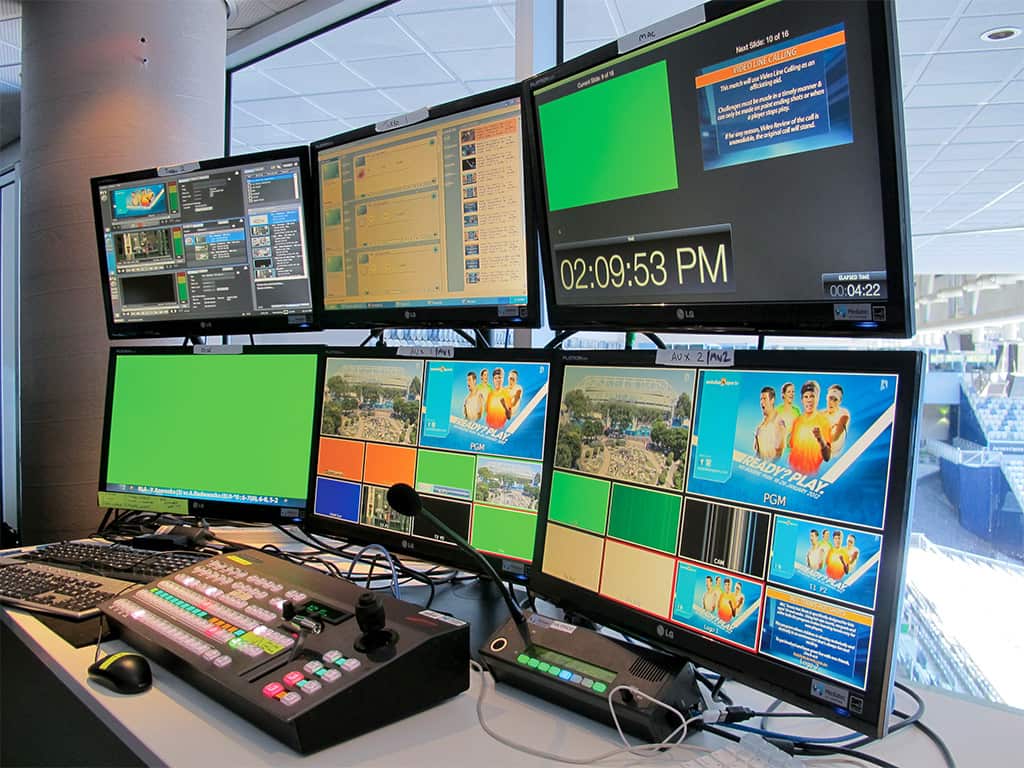

THE LIGHTHOUSE AT THE END OF THE TUNNEL
Other than a handful of Kindwin 12mm LED scoreboard screens on the outer show courts, the installation is predominantly a massive Lighthouse LED showcase. There are 6mm indoor screens in corporate lounges and hospitality areas, and 10mm (BK10) and 16mm (R16) outdoor screens used throughout the outside precinct and in the main arenas. The BK10 10mm resolution module is an SMD product (using surface-mounted devices where all three RGB LEDs are embedded on a single chip) designed especially for Mediatec Australia and the Australian Open, and is not officially part of the Lighthouse LED range as yet. The ‘tiles’ are 1280mm x 960mm and weigh in at 60kg per module.
Mediatec contacted Lighthouse in July 2011 about their requirements. “They had a chassis designed that was close to what we needed,” Davison explained. “The IM (Intelligent Module – the pixel blocks that combine to form a LED tile) was almost there as well”. Mediatec visited Lighthouse in September to have a look at the proposed chassis and IM design and analyse the picture quality. During this visit a further 20 design modifications were proposed. Mediatec then returned in December to sign off on the modules. Sadly this is an all-too-rare instance of a product manufacturer not only listening closely to rental customers, but co-designing a product with them. Not surprisingly Davidson is full of praise for Lighthouse. “They have been out in the wilderness for about four or five years; basically since they produced R16. They haven’t done much for rental companies over the years, but this now seems to have changed. They were very open to modifications, which was previously not possible. I think this product could be as successful for them as R16 was.”
One of the clever modifications that Mediatec requested was a ‘quick change’ capability for the IMs should they fail. With the BK10, IMs can be replaced with a single hex-driver from the front or the rear of the unit. Previously this process would take an eternity as it could only be carried out from the rear of the tile, and then it required the removal of 12 screws. The IMs also have flexible ‘rubberised’ louvres surrounding the pixels. The previous style of hard-plastic louvre was brittle and often snapped and cracked during installation and road-casing, and are the cause of numerous scars on video LED technicians all over the world.
“”
Mediatec involved themselves in aspects of this event that many video suppliers would avoid
HIGH FIBRE CONTENT
The control, production and signal distribution system is very cleverly engineered by Mediatec. All signals throughout the installation are HD- SDI (High Definition Serial Digital Interface) over fibre using Riedel’s MediorNet system. This fibre backbone was faultless throughout the event, and with a total over 30km of fibre distributing signals, this was comforting for all involved. “This was easily the best purchase of 2011,” said Davison. Each of the three arenas had a dedicated control area to run their local site. Incoming broadcast feeds came via the Mediatec Master Control room near the broadcast suites. With a robust fibre network and two weeks to install and test everything, it would be quite plausible to run everything from a centralised location, but Mediatec have always chosen to run with separate control areas to maximise redundancy in case of a power outage or a corrupted broadcast feed. If Master Control was ever to lose power, each venue has the ability to mix in holding graphics whilst power is being restored in the mother ship.
On the power front, all 900A of the three- phase power required by Mediatec’s screens and control equipment was supplied from installed venue power, without any requirement for auxiliary supplies or generators. All the control equipment in each location was backed-up by a fleet of 22 uninterruptible power supplies.
A SHARED VISION
The vision mixing was via Ross Carbonite consoles in all locations. The mixers cut between a wide range of HD sources, such as broadcast feeds, Hawk-Eye feeds, graphic overlays and statistics from IBM, as well as Facebook and Twitter updates. Mediatec supplied and created all the graphics and content and provided the Macs to run them. They also supplied the creative personnel to build everything on- the-fly such as player profiles and live public messaging. Ross NK Series Routers and Open Gear Cards/Frames were utilised along with TeleCast Rattlers to ensure high quality HD- SDI signals to all of the screens. Video playback (tape packages) as well as recording (all of the matches are archive-recorded for the officials in case of any legal disputes) were via Grass Valley T2 iDDR Turbo disk recorders. Mediatec audio mixing in each arena was on Yamaha LS9 consoles and with a DigiCo SD11 in master control.
With control areas so far away from each other, a rock-solid communications system was imperative. Mediatec supplied and installed a Riedel Artist 32 system that linked all the critical sites within the precinct. This system was run solely on fibre over the MediorNet backbone.
Besides running each arena site for the actual tennis matches, there was an internal ‘TV show’ that commenced each morning and continued throughout the day between matches. The purpose of this broadcast, besides entertaining the patrons, was to inform them of any changes to the schedule. Content included highlight reels from previous days, live crosses to various players and fans, and of course, sponsorship tape packages.
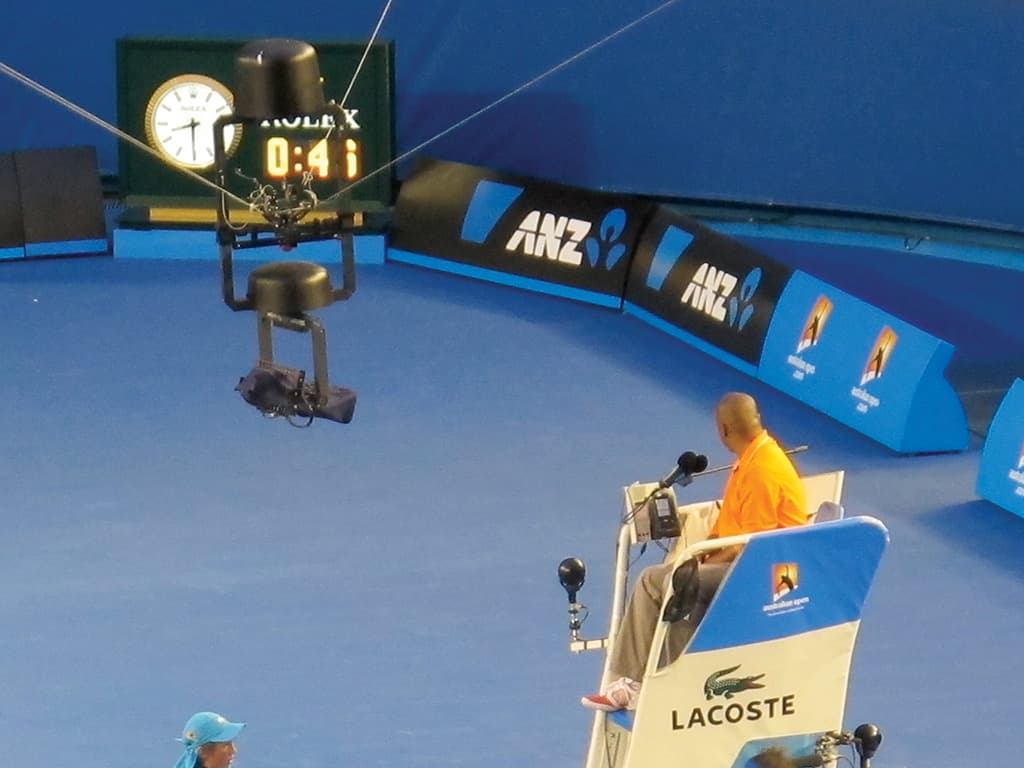
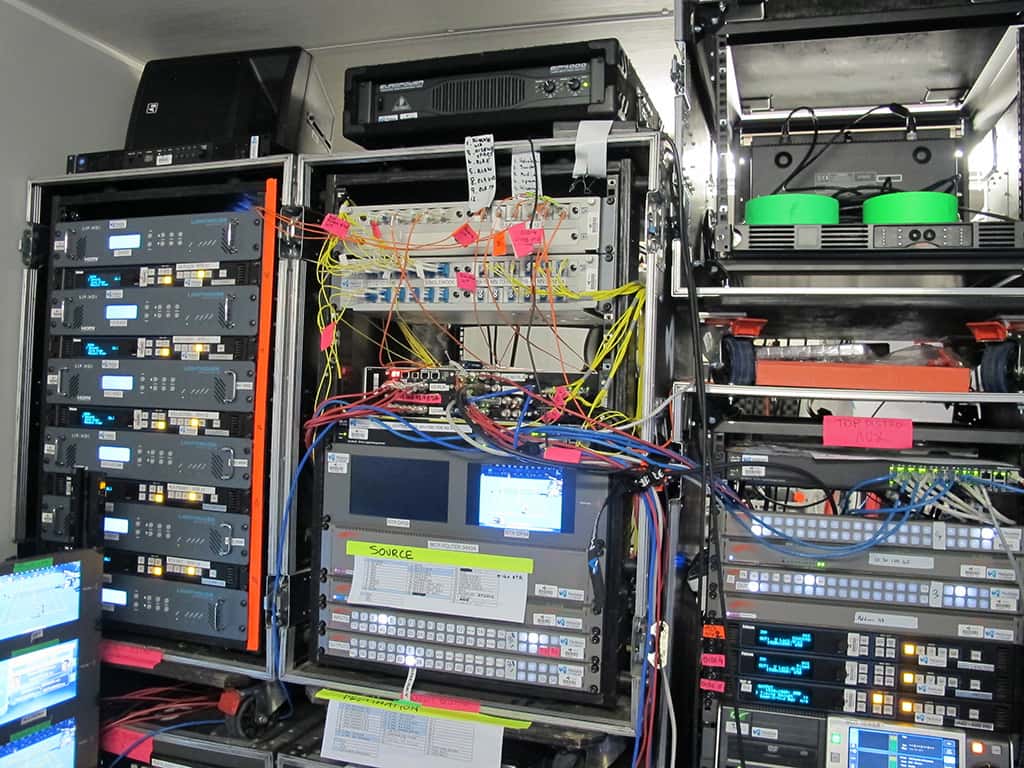

ALONG CAME A SPIDER
I was also lucky enough to check out the Spidercam rig in Rod Laver Arena up close. This system was supplied directly from Spidercam’s German headquarters and operated by a German Spidercam crew. Whilst I have observed this system from afar (and been in awe of the shots that it can deliver) it was amazing to see it in action. Spidercam is essentially a specially-created counterweighted camera unit that moves and hovers like a helicopter around the tennis court allowing the camera to capture footage that would otherwise be impossible, even with a massive jib. The lightweight gyro-stabilised camera unit is suspended from Kevlar cables fed out from four computer precision-controlled winches located in each corner of the arena catwalk. The speed and accuracy of the winches is most impressive, and the fact that video feed and control signals travel over optical fibres embedded in these same cables is quite staggering.
THE LONG MARCH
The timeline for this installation was pretty compressed. Between August and December there were four meetings each week with various departments to cover all aspects of the installation; broadcasters, IT, LED screens, corporate areas, hospitality areas and TV production. All LED rigging structures were designed by Mediatec which worked closely with an engineering firm and steel fabricator. The fabricator was also present during the installation in case onsite alterations were required or anything needed to be invented on the spot.
All fibre cables were installed and tested in November, well ahead of schedule, and guaranteed much less troubleshooting than an event this size would usually require. In December, all schematic drawings were finalised and transferred from Owen Davidson’s brain to paper for the install crew. Installation of equipment began in the second week of December. A total of six crew worked for two weeks installing all the steel work for the screens. They were followed by 12 more crew installing all the LED screens the following week. A crew of 20 then installed the 762 plasma screens over a three-week period.
On each day of the competition, the event is run by a total of 10 video crew. Finally, the packdown is a five-day process involving up to 40 crew. Client meetings will begin any day now to talk about Australian Open 2013.
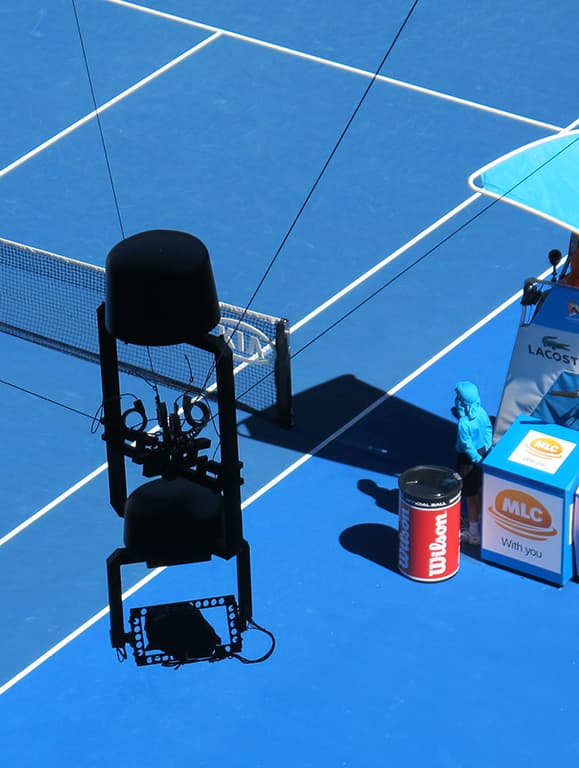
PRODUCTION CREDITS
Australian Open Series Project Manager: Owen Davison
Assistant Project Manager: Steve Letch
LED Screen Project Manager: Tom Hogan
AV/Corporate Project Manger: Rob Nelson
Plasma Installation/Removal Project Manager: Jason Buchanan
Production Systems Head Technician: Leigh Ferguson
Production Systems/LED Technician: Sean Cooper
Real Time Information/Graphics/IT Systems Tech: James Hughes
LED Technicians: Dan Aulich, Addam Crawford
Graphics Production: Toby Harding, Sean Killa
Camera Operator: Adrian Kristoferson
Rigger: Murray Hare


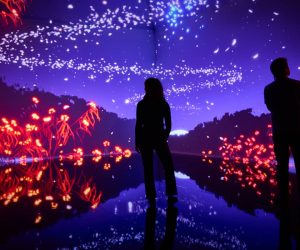

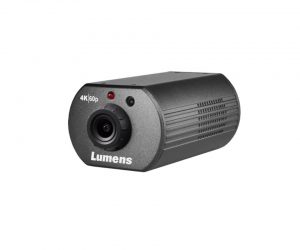
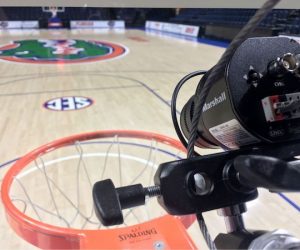

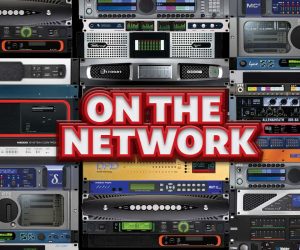

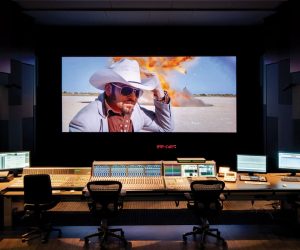





RESPONSES